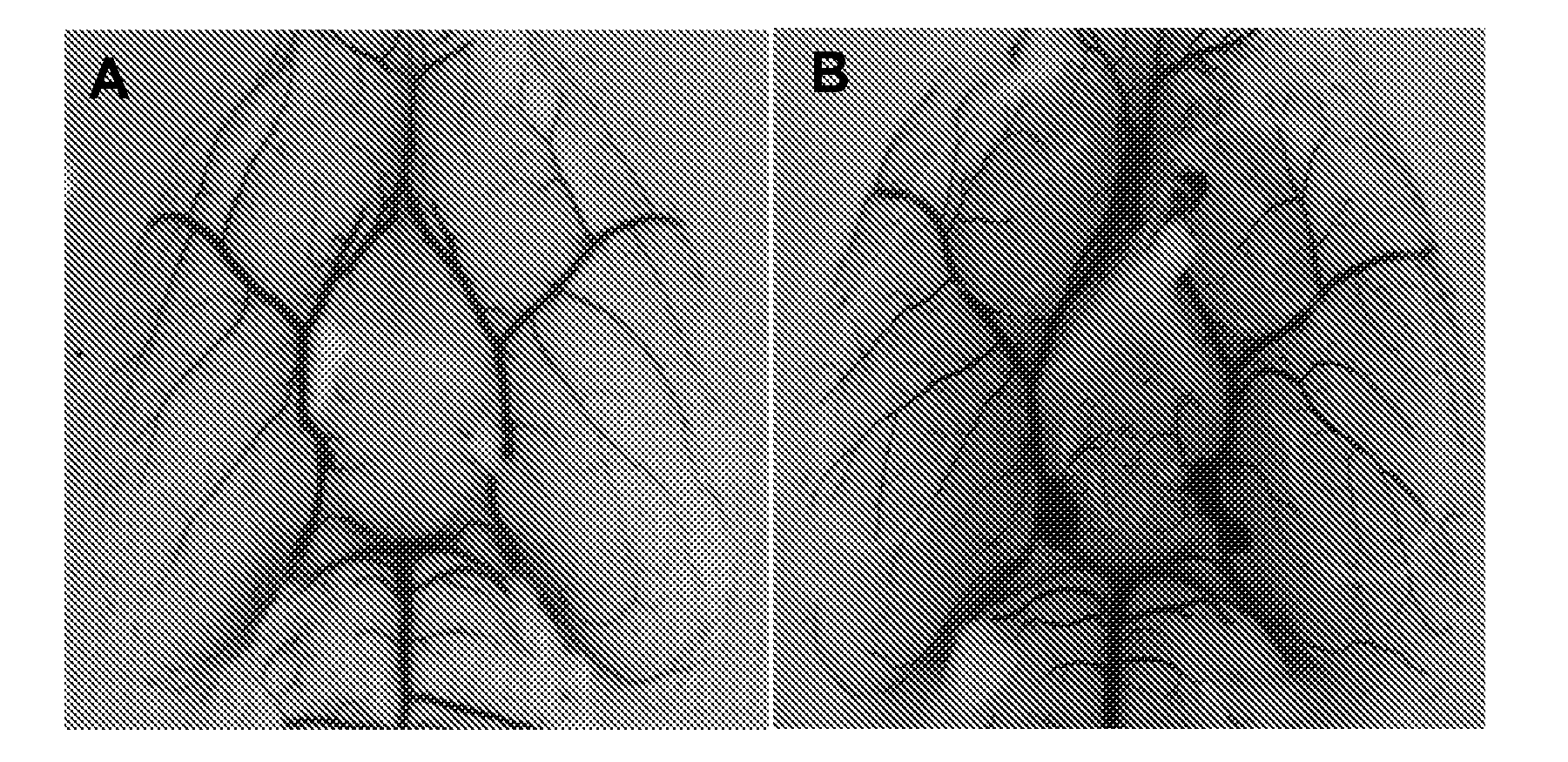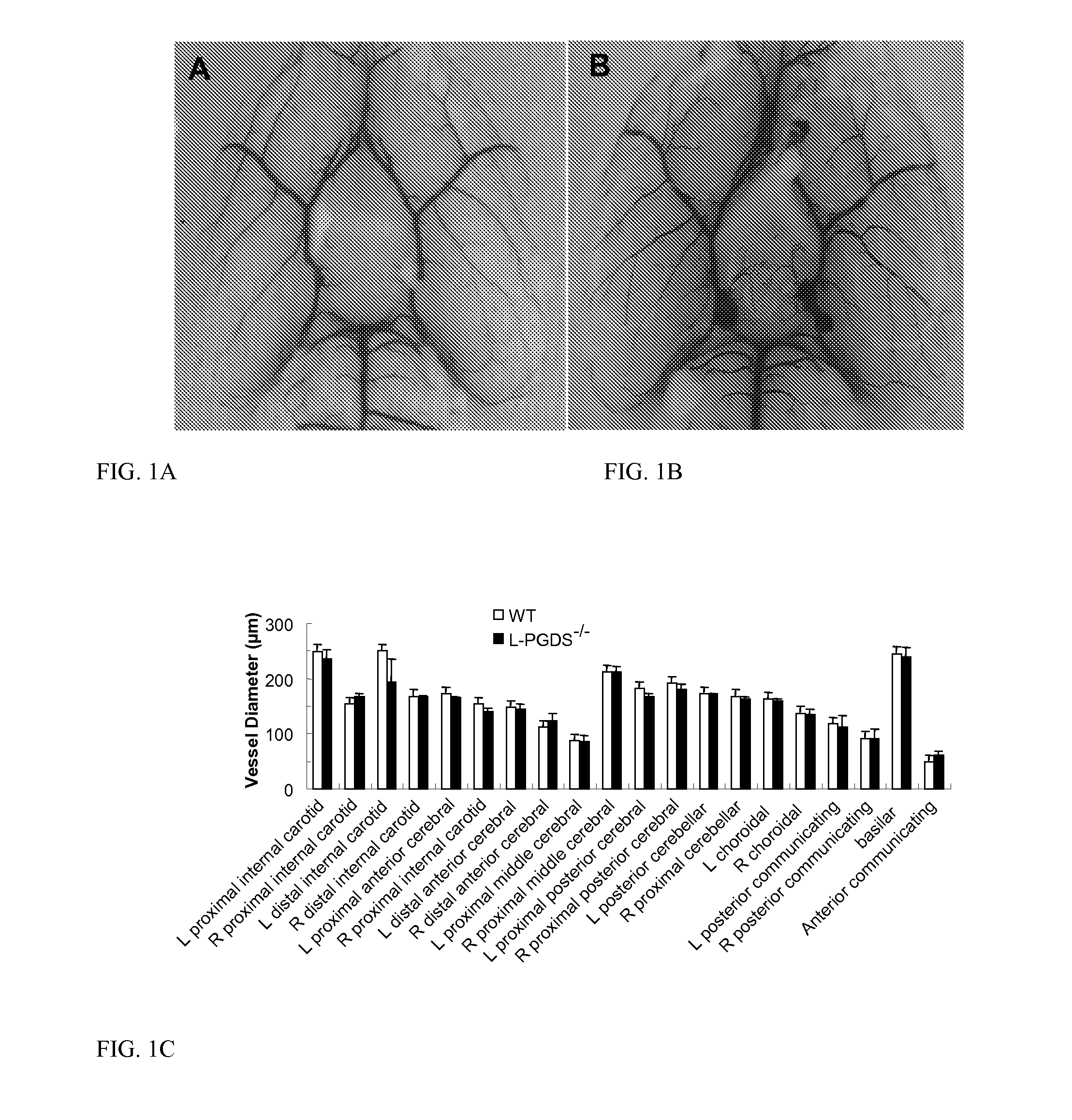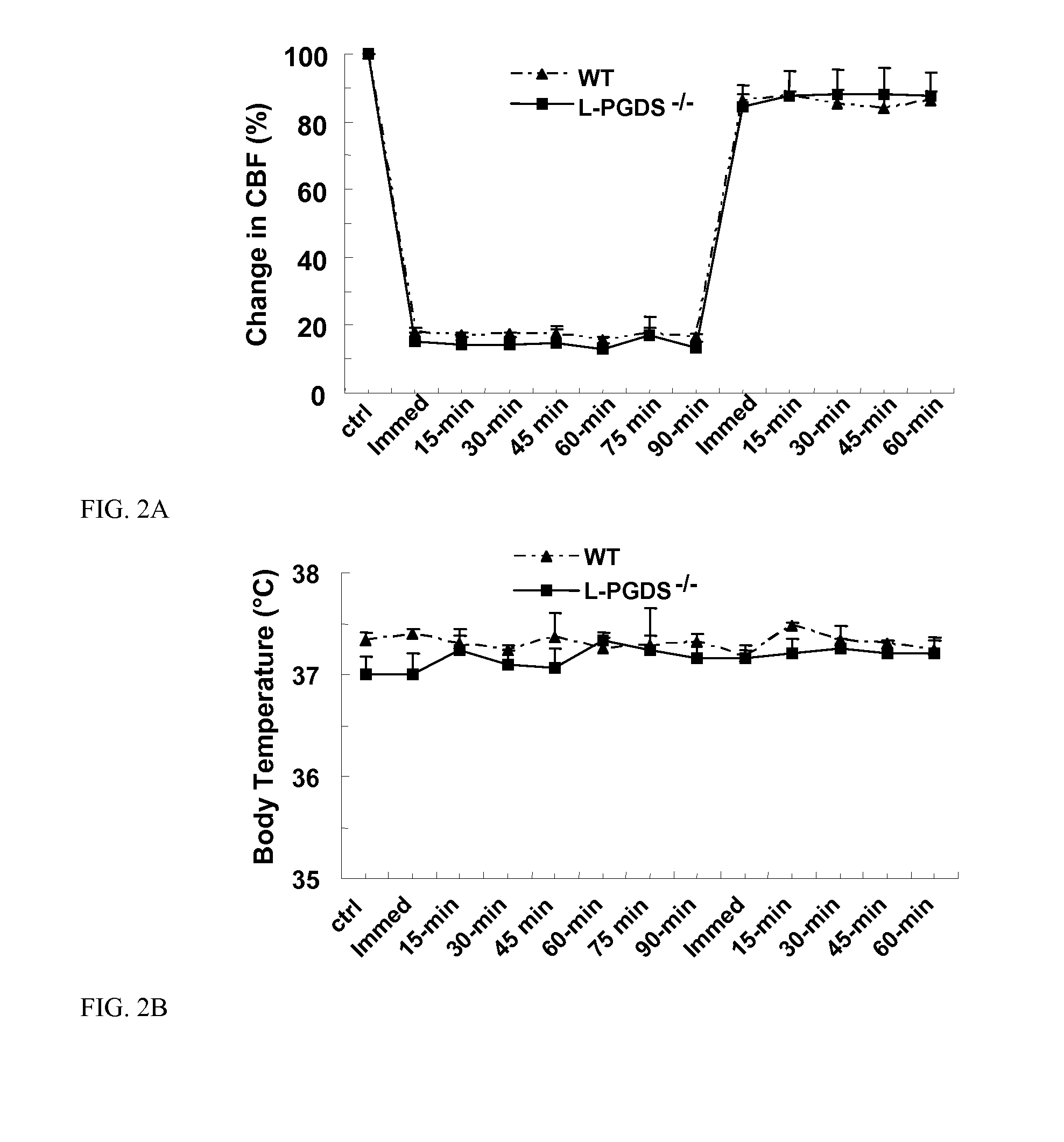Treatment and prevention of ischemic brain injury
a technology of ischemic brain injury and agent, applied in the field of identifying agents for treating and preventing ischemic brain injury, can solve the problems of brain damage severity, brain cells to die, neurological impairments, etc., and achieve the effect of preventing or decreasing a symptom of ischemic brain injury and increasing the expression of l-pgds
- Summary
- Abstract
- Description
- Claims
- Application Information
AI Technical Summary
Problems solved by technology
Method used
Image
Examples
example 1
Materials and Methods
[0034]This study was performed in accordance with the NIH guidelines for the use of experimental animals; protocols were approved by the Johns Hopkins Animal Care and Use Committee. C57BL / 6 WT and L-PGDS− / − mice were bred and genotyped for this study.
[0035]Anatomical examination of cerebrovasculature. Adult male WT and L-PGDS− / − mice (20-25 g; n=3 / group) were deeply anesthetized with halothane before being perfused by cardiac puncture with saline followed by black latex paint. Then the brains were carefully harvested and immersed in 10% formalin for 24 h before examination. The vessel diameters were evaluated with Metavue software (Meta Imaging Series Software, Downingtown, Pa., USA).
[0036]Transient ischemia protocol and assessment of neurological score. Transient focal cerebral ischemia was induced by tMCAO with an intraluminal filament technique as described (Ahmad et al., 2006). Briefly, adult male mice (20-28 g) were placed under halothane anesthesia. Body t...
example 2
Effect of L-PGDS on Transient Focal Ischemia-Induced Brain Injury
[0041]This example describes the effect of L-PGDS on transient focal ischemia-induced brain injury. Pathophysiological outcomes after MCAO in WT and L-PGDS− / − mice were compared. Examination of the large cerebral vessels in WT and L-PGDS− / − mice revealed no significant differences between the two groups. Similarly, there were no significant differences in blood vessel diameters, MABP or blood gases (pH, PaCO2, and PaO2) between WT and L-PGDS-1-mice (FIGS. 1-2; Table 1).
TABLE 1Effect of MCAO on physiological parameters in WT and L-PGDS− / − micewild-type miceL-PGDS− / − miceParameterbaseline1 h MCAO1 h reperfusionbaseline1 h MCAO1 h reperfusionpH7.37 ± 0.027.34 ± 0.017.35 ± 0.017.34 ± 0.017.34 ± 0.017.33 ± 0.01PaCO238.7 ± 1.240.3 ± 1.139.7 ± 1.539.1 ± 1.139.4 ± 1.039.5 ± 1.0PaO2 108 ± 2 128 ± 4 112 ± 5 111 ± 5 127 ± 7 114 ± 3
[0042]However, the mean infarct size of mice lacking L-PGDS was significantly greater (p− / − mice wer...
PUM
 Login to View More
Login to View More Abstract
Description
Claims
Application Information
 Login to View More
Login to View More - R&D
- Intellectual Property
- Life Sciences
- Materials
- Tech Scout
- Unparalleled Data Quality
- Higher Quality Content
- 60% Fewer Hallucinations
Browse by: Latest US Patents, China's latest patents, Technical Efficacy Thesaurus, Application Domain, Technology Topic, Popular Technical Reports.
© 2025 PatSnap. All rights reserved.Legal|Privacy policy|Modern Slavery Act Transparency Statement|Sitemap|About US| Contact US: help@patsnap.com



